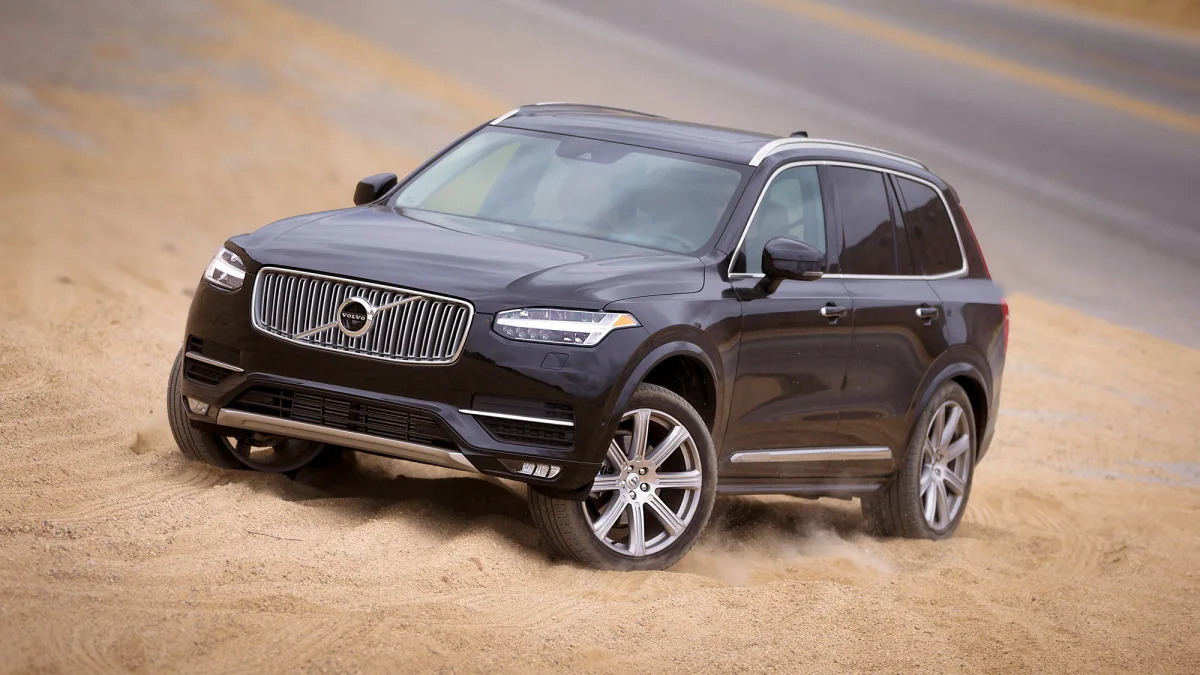"Are the gains made in recent years slipping away? Can Volvo ever truly compete with German, Japanese, and US luxury brands?"
No one knew how it would work out when Ford sold Swedish automaker Volvo to China's Geely in 2010. Geely was willing to invest major money for Volvo to completely redesign its vehicle platforms, powertrains, and processes to replace the Ford equipment it had used for the previous decade – but plenty of historic brands have deep-pocketed patrons backing them up.
It was similar to Volvo's last sale in 1999, when industry experts were divided as Ford purchased Volvo to fill out its former Premium Automotive Group, which also included Jaguar, Land Rover, Aston Martin, Lincoln, and Mercury. Volvo's prospects darkened when the global economy and auto sales collapsed in 2008-2009. Its US sales slumped from a Ford-era peak of just under 140,000 in 2004 to 54,000 in 2010.
Driven by new technology and products, sales began to rebound as Volvo's old four-, five-, and six-cylinder engines were replaced by a new family of fuel-efficient Drive-E 2.0-liter turbocharged fours. Some were also supercharged and some teamed with electric motors in hybrid models. Then came the 2016 XC90 three-row SUV, which earned multiple awards, including North American Truck/Utility of the Year.
Volvo's new products garnered strong media reviews, and the company sold more than 500,000 vehicles globally for the first time in 2015, up 24 percent in the US market, 10 percent in Europe, and 11.5 percent in China. That was followed up by more than 534,000 sales in 2016. Though its US division topped 82,700, it fell far short of key competitors and still wasn't back to its height under Ford ownership. This year, it's been a slow start, with XC90 deliveries sagging 36.3 percent through April, and the beautiful S90 sedan has not sold well. Company sales are down 8.6 percent in the American market so far this year, though April saw a 15.4-percent uptick.
Are the gains made in recent years slipping away? Can Volvo ever truly compete with German, Japanese, and US luxury brands? Or will it continue to trail in perception and sales? "I think we made such a step upward with the XC90 that we are on par with the premium competition," Volvo's North American CEO Lex Kerssemakers says. "The XC60 [is] exactly the same. Our philosophy a few years ago was to be on par with them, and now our recently introduced vehicles are on par with them from a luxury perspective. Are we there from an awareness perspective? No, not yet. We know that will take a while."
Kerssemakers attributes the early 2017 XC90 slump to low US supply since it has now been launched worldwide and disappointing S90 sales to the shrinking but still highly competitive luxury sedan segment. Its appeal might strengthen, however, when the China-built stretched 2018 model with limo-like rear seats arrives. Big sales from the lovely V90 wagon, or its mildly off-road-capable Cross Country variant are not expected, but the next-gen midsize XC60 and soon-to-come compact XC40 could prove to be robust sellers.
"We have spent $11 billion on the product-driven turnaround we started in 2010," Kerssemakers says, "on products, platforms, powertrains, processes, and two new factories in China and one in the United States. At the end of this year, we will introduce the XC40 SUV, so we will have three highly modern SUVs by early next year. That is a very good starting point in a booming SUV market."
Still, the company is thinking long-term. Inevitably, its attractive crossovers should perform better in the US market, where Volvo is strengthening its footprint with a new South Carolina plant. That site will build mid-range S60 sedans for global distribution beginning in the fall of 2018, and a second variant yet to be announced. Volvo also has an assembly plant near its Gothenburg, Sweden, headquarters and another in Belgium.
As it waits for the sales to return, the company continues to focus on its historic calling card – safety – while embracing emerging technologies. "No one should be killed or seriously injured in a Volvo by 2020, and autonomous drive will be a central ingredient of that," Kerssemakers says. "We are working very hard on autonomous, and when we decided to go to four-cylinder turbo engines, one big ingredient of that was electrification. We have a long journey to go, but we strongly believe in electrification, both hybrids and fully electric vehicles. We will launch a full electric car in 2019, and we want a million electrified Volvo cars on the roads by 2025."
It's an ambitious plan, which Volvo will need to deliver upon if it is to follow up on its sales success of the last few years. Only then can it feel secure that its comeback is secure.
Related Video










Sign in to post
Please sign in to leave a comment.
Continue